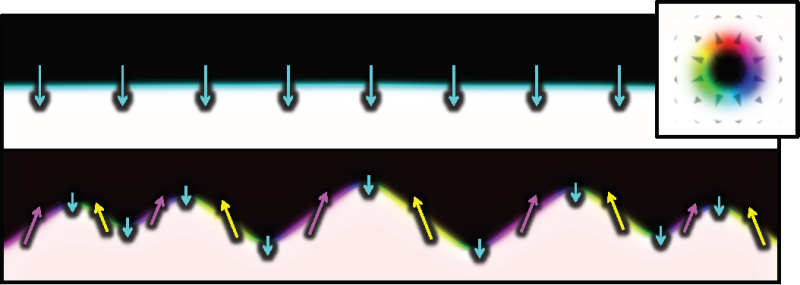Uncovering the connection between negative stiffness and magnetic domain walls

Nature doesn't like having interfaces—this is why bubbles like to be round, and the surface of a pond settles to flat as long as it's not disturbed. These trends minimize the total amount of interface (or surface) that is present. As an exception to this behavior, certain materials are known to have a property, called negative stiffness, where the interface prefers to become distorted, or wavy, even without any external stimulation.
Interfaces with negative stiffness have been considered in crystals before, but the characteristic has now also been found in modern magnetism. Researchers in Carnegie Mellon University's College of Engineering have shown that the interface separating two oppositely magnetized regions of a material (called a domain wall) can also exhibit negative stiffness.
Materials Science and Engineering Ph.D. students Price Pellegren and Derek Lau, led by Assistant Research Professor of Materials Science & Engineering Vincent Sokalski, demonstrate that this stiffness is precisely what governs how the domain wall moves around in certain ultrathin magnets. In the study, they also describe how the domain wall can be adopted as a tool to measure the distribution of unwanted defects in the material.
This understanding of domain wall behavior is critical for the development of future energy-efficient computers where information is stored in the domain wall as it moves through a magnetic circuit.
For more information on this research, please read the full article, "Dispersive Stiffness of Dzyaloshinskii Domain Walls," published in Physical Review Letters.
More information: Dispersive Stiffness of Dzyaloshinskii Domain Walls, Phys. Rev. Lett. 119, 027203 – Published 14 July 2017, journals.aps.org/prl/abstract/ … ysRevLett.119.027203
Journal information: Physical Review Letters




















